No Results Found
The page you requested could not be found. Try refining your search, or use the navigation above to locate the post.
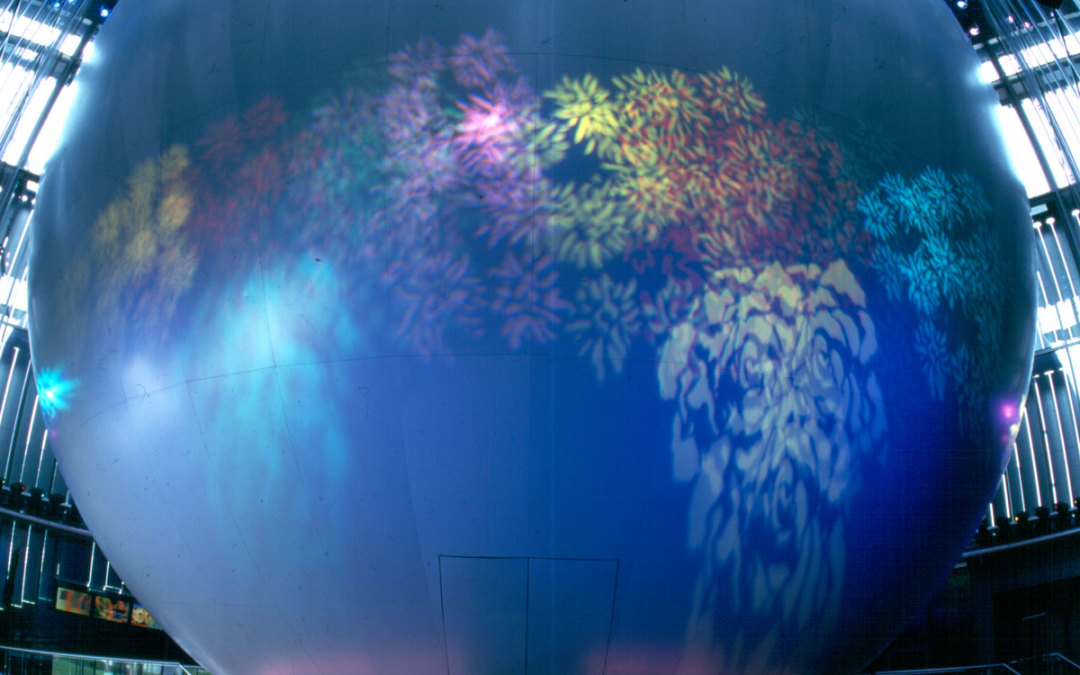
Spitz delivered both the outer sphere and the inner projection dome, along with access ladders and catwalks. Doors and emergency smoke hatches were manufactured with hidden hardware to be flush to the sphere’s surface, providing nearly invisible seams.
The page you requested could not be found. Try refining your search, or use the navigation above to locate the post.
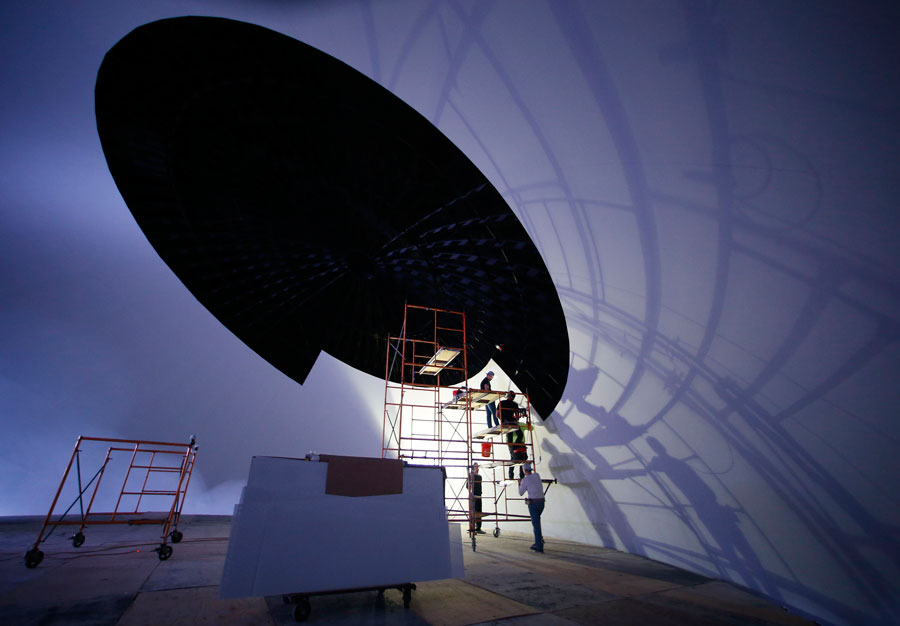

Richmond’s Science Museum of Virginia is located in an expansive railway terminal, originally named “Broad Street Station”. The museum opened in 1977, with the addition of The Universe Planetarium in 1983. The planetarium opened with a 23 meter dome, featuring the world’s first Evans and Sutherland “Digistar” digital planetarium system and an OMNIMAX 15 perf/70mm film system. The combination planetarium and film theater is one of the only Imax dome sites with a screen made by a non-Spitz dome supplier.
As part of a complete theater upgrade to state-of-the-art digital simulation, SMV’s vision included a new dome surface to enhance the visual experience. The existing screen showed visible seams and needed a dramatic overhaul to improve the projection quality. Spitz needed to accommodate the existing structure created by the third-party manufacturer, and add frame and paneling to cover the unused projection gallery at the back of the theater.
In 2014, Spitz removed the old panels and added a new frame section at the rear of the dome. The original dome paneling was replaced with a completely uniform NanoSeam surface which was perfectly matched to the original frame, giving the new theater a seamless look which vastly improved the immersive projection experience.
The page you requested could not be found. Try refining your search, or use the navigation above to locate the post.
To learn more about Spitz planetariums, projection domes, fulldome shows, and architectural spheres, contact Spitz at +1.610.459.5200.
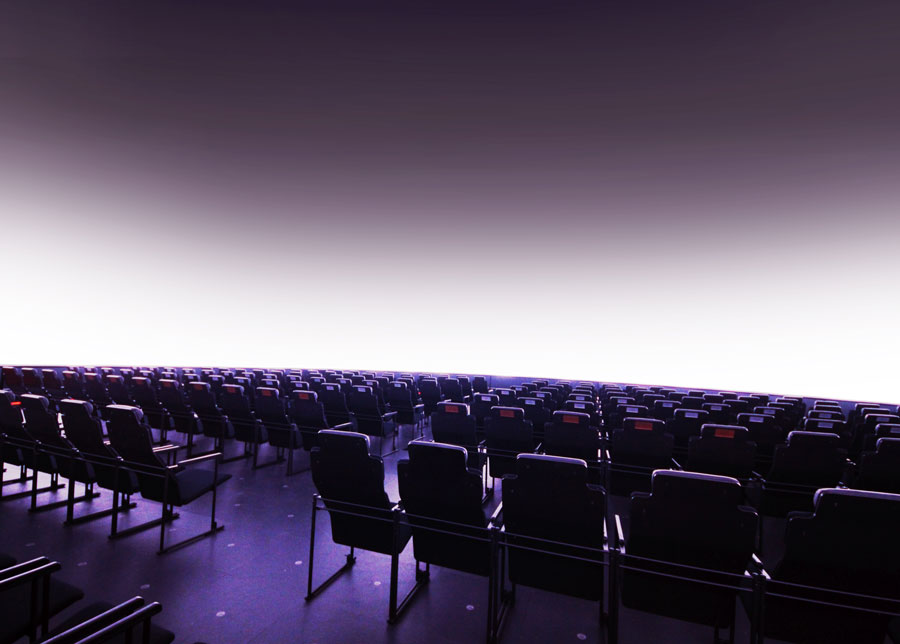

Opened in 1930, Chicago’s Adler Planetarium was the first planetarium in the Americas. Frequent updates in the intervening decades have kept it on the cutting edge of domed theater technology.
In the late 1990s, the Adler Planetarium underwent a major expansion, adding several exhibit halls, a flat screen 3D theater, and a second planetarium dome with the world’s first fulldome digital projection system.
With their major growth initiative completed, the staff of the Adler turned their sights toward bringing their oldest, largest domed theater up to the state of the art. Digital projection technology was advancing at a rapid pace, with 8K (8000 x 8000 pixel) display capabilities looming on the horizon. The Adler began plans for a complete ground-up renovation to make their centerpiece theater once again the world’s most sophisticated planetarium.
After comparing available solutions, the Adler determined that only Spitz’s NanoSeam projection dome could deliver the seamlessness they were seeking for their flagship planetarium.
The project incorporated two unusual requirements. Rather than a 360º by 180º hemisphere ending at a spring line typically six feet or higher above the floor, the Adler wanted a dome surface that continued to, and even below, eye level. The resulting dome extends a total of 191º from horizon to horizon.
This design choice meant the entrance to the theater would actually come through the dome, rather than underneath it. The Adler’s specification further embraced this unconventional configuration by curving the dome gracefully into the entryway, rather than simply cutting a door into the dome. Spitz collaborated with the Adler team throughout this design process to create a unique and striking experience for the embarking audience.
With the renovation complete, the Adler’s primary dome reopened in 2011 as the Grainger Sky Theater.
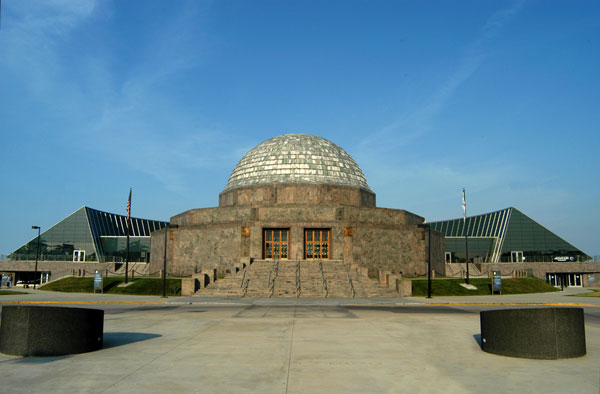
The seams are absolutely invisible under projection conditions. Having the screen surface ‘disappear’ from the scene adds depth and realism to the projection.
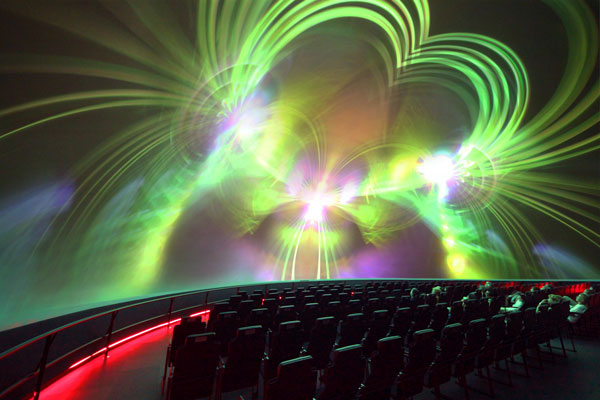
The page you requested could not be found. Try refining your search, or use the navigation above to locate the post.
To learn more about Spitz planetariums, projection domes, fulldome shows, and architectural spheres, contact Spitz at +1.610.459.5200.
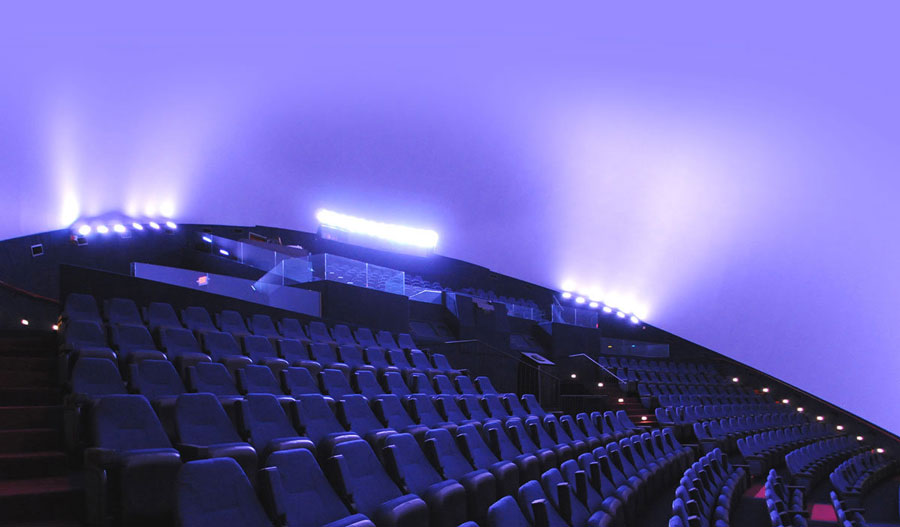

Located in San Diego’s historic Balboa Park, the Reuben H. Fleet Science Center includes a hands-on science museum as well as the world’s first IMAX Dome, the Heikoff Giant Dome Theater.
Built by the San Diego Hall of Science in 1973, the then-“Reuben H. Fleet Space Theater” was a watershed design, diverging from traditional planetarium theater configuration in two important ways: 1) The dome was tilted at a 25º angle, rather than parallel to the floor; and 2) The seats were arranged to face in the same direction, rather than concentrically around the theater center. These changes provided the entire audience with a common center of focus and a common orientation, opening up flexibility in creating more compelling, theatrical presentations.
In conjunction with this novel theater geometry, The Fleet approached IMAX Corporation to investigate the feasibility of presenting the company’s revolutionary large-format films in a domed theater. While the concept presented several serious technical challenges, the resulting fisheye projection system paved the way for dozens of IMAX Dome theaters around the world.
After several decades of highly successful operation, The Fleet’s dome theater was due for a major upgrade. The geodesic dome suffered from visible seam lines, which limited the immersive impact of the theater’s wraparound configuration. With upgrades to digital projection on the horizon, The Fleet approached Spitz for solutions to return its theater to the forefront of dome projection.
It’s like sitting inside a giant eggshell.
With seam visibility reduction as their paramount concern, The Fleet selected Spitz’s NanoSeam for their new projection surface.
Because the original dome’s unusual geodesic configuration used many small triangular panels (with many, many seams as a result), its supporting structure wasn’t able to be repurposed for the new NanoSeam dome. Instead, we removed the existing dome, skeleton and all, then built a brand new framework from the basering up to support NanoSeam’s much larger, pre-curved, trapezoidal panels.
Sound reinforcement was another major element of this upgrade. To support the additional weight of the new sound system’s much more powerful speakers, Spitz custom-fabricated mounting hardware which allowed the speakers to be mounted directly on the rear of the dome.
The page you requested could not be found. Try refining your search, or use the navigation above to locate the post.
To learn more about Spitz planetariums, projection domes, fulldome shows, and architectural spheres, contact Spitz at +1.610.459.5200.
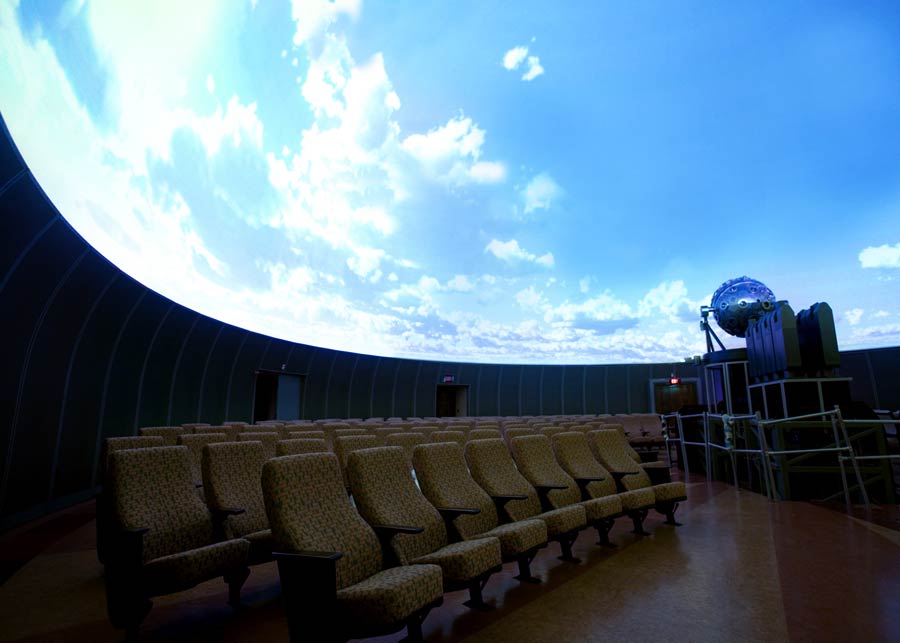

Completed in 1935, the Griffith Observatory is perhaps the most iconic planetarium location in the world. The distinctive art deco structure, with its commanding view of not only the stars above but the city below, has been featured in a wide variety of film and television productions.
The planetarium was renovated and upgraded in 1964, but by the turn of the century, advances in digital technology had left it behind. In 2002, the planetarium closed for a comprehensive reinvention from the ground up.
This projection dome project presented several unusual requirements:
In addition, all these needs had to be met while providing a superior projection surface that would make the most of the theater’s new, state of the art digital projection technology.
The Griffith selected Spitz based on our demonstrated ability to complete the complex engineering and design work necessary to meet their specifications, as well as the superior projection characteristics of our Premium Seam product (at the time, the most seamless surface available; since then eclipsed for seamlessness by Spitz’s NanoSeam™).
We designed, fabricated, and installed an elaborate series of catwalks, as well as mounts for speakers and other attachments, all supported by the dome’s structural skeleton. For the intelligent lighting, we designed and installed removable portholes operated by linear actuators, which allowed for extremely low clearance between the dome and the lighting units.
The newly-renamed Samuel Oschin Planetarium reopened in 2006 to rave reviews.
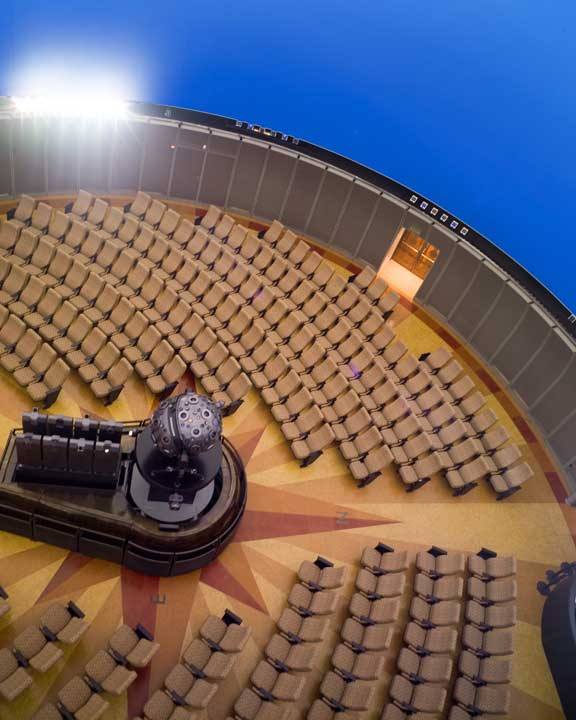
This unusual planetarium view was taken through one of the custom projection ports Spitz installed to the Griffith’s specifications. Image courtesy Duro-Design, who created the beautiful cork floor for the theater’s renovation.
The page you requested could not be found. Try refining your search, or use the navigation above to locate the post.
To learn more about Spitz planetariums, projection domes, fulldome shows, and architectural spheres, contact Spitz at +1.610.459.5200.